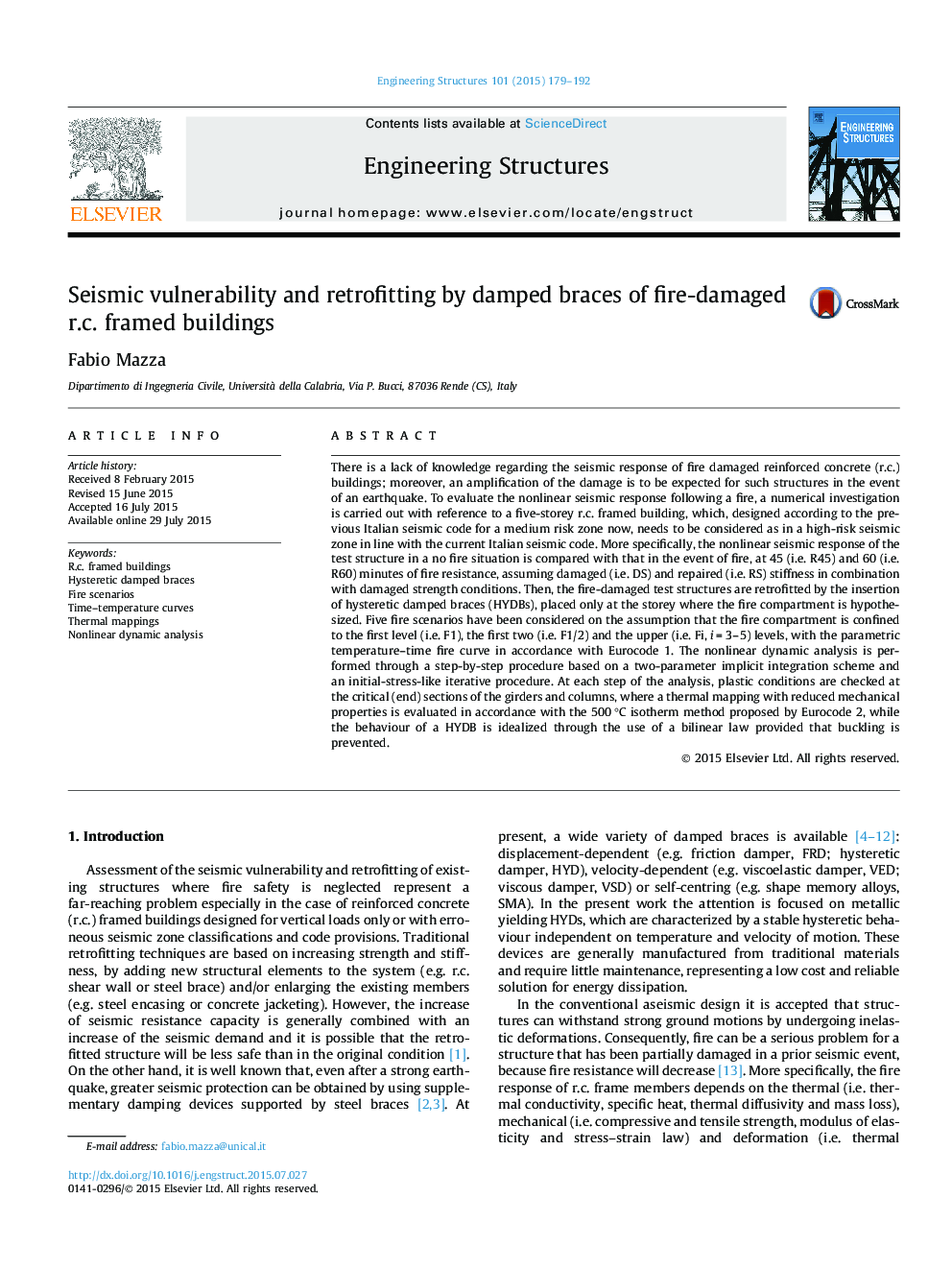| Article ID | Journal | Published Year | Pages | File Type |
|---|---|---|---|---|
| 266036 | Engineering Structures | 2015 | 14 Pages |
•Time–temperature curves of the fire-compartment and fire scenarios.•Thermal mappings of the cross-section of r.c. frame members.•Reduction of mechanical properties due to fire loading before an earthquake.•Seismic vulnerability of fire-damaged r.c. framed structures.•Seismic retrofitting of fire-damaged r.c. structures by using damped braces.
There is a lack of knowledge regarding the seismic response of fire damaged reinforced concrete (r.c.) buildings; moreover, an amplification of the damage is to be expected for such structures in the event of an earthquake. To evaluate the nonlinear seismic response following a fire, a numerical investigation is carried out with reference to a five-storey r.c. framed building, which, designed according to the previous Italian seismic code for a medium risk zone now, needs to be considered as in a high-risk seismic zone in line with the current Italian seismic code. More specifically, the nonlinear seismic response of the test structure in a no fire situation is compared with that in the event of fire, at 45 (i.e. R45) and 60 (i.e. R60) minutes of fire resistance, assuming damaged (i.e. DS) and repaired (i.e. RS) stiffness in combination with damaged strength conditions. Then, the fire-damaged test structures are retrofitted by the insertion of hysteretic damped braces (HYDBs), placed only at the storey where the fire compartment is hypothesized. Five fire scenarios have been considered on the assumption that the fire compartment is confined to the first level (i.e. F1), the first two (i.e. F1/2) and the upper (i.e. Fi, i = 3–5) levels, with the parametric temperature–time fire curve in accordance with Eurocode 1. The nonlinear dynamic analysis is performed through a step-by-step procedure based on a two-parameter implicit integration scheme and an initial-stress-like iterative procedure. At each step of the analysis, plastic conditions are checked at the critical (end) sections of the girders and columns, where a thermal mapping with reduced mechanical properties is evaluated in accordance with the 500 °C isotherm method proposed by Eurocode 2, while the behaviour of a HYDB is idealized through the use of a bilinear law provided that buckling is prevented.
